Josiah Poon
Workshop on Document Intelligence Understanding
Jul 31, 2023


Abstract:Document understanding and information extraction include different tasks to understand a document and extract valuable information automatically. Recently, there has been a rising demand for developing document understanding among different domains, including business, law, and medicine, to boost the efficiency of work that is associated with a large number of documents. This workshop aims to bring together researchers and industry developers in the field of document intelligence and understanding diverse document types to boost automatic document processing and understanding techniques. We also released a data challenge on the recently introduced document-level VQA dataset, PDFVQA. The PDFVQA challenge examines the structural and contextual understandings of proposed models on the natural full document level of multiple consecutive document pages by including questions with a sequence of answers extracted from multi-pages of the full document. This task helps to boost the document understanding step from the single-page level to the full document level understanding.
Tri-level Joint Natural Language Understanding for Multi-turn Conversational Datasets
May 28, 2023Abstract:Natural language understanding typically maps single utterances to a dual level semantic frame, sentence level intent and slot labels at the word level. The best performing models force explicit interaction between intent detection and slot filling. We present a novel tri-level joint natural language understanding approach, adding domain, and explicitly exchange semantic information between all levels. This approach enables the use of multi-turn datasets which are a more natural conversational environment than single utterance. We evaluate our model on two multi-turn datasets for which we are the first to conduct joint slot-filling and intent detection. Our model outperforms state-of-the-art joint models in slot filling and intent detection on multi-turn data sets. We provide an analysis of explicit interaction locations between the layers. We conclude that including domain information improves model performance.
SimCGNN: Simple Contrastive Graph Neural Network for Session-based Recommendation
Feb 08, 2023



Abstract:Session-based recommendation (SBR) problem, which focuses on next-item prediction for anonymous users, has received increasingly more attention from researchers. Existing graph-based SBR methods all lack the ability to differentiate between sessions with the same last item, and suffer from severe popularity bias. Inspired by nowadays emerging contrastive learning methods, this paper presents a Simple Contrastive Graph Neural Network for Session-based Recommendation (SimCGNN). In SimCGNN, we first obtain normalized session embeddings on constructed session graphs. We next construct positive and negative samples of the sessions by two forward propagation and a novel negative sample selection strategy, and then calculate the constructive loss. Finally, session embeddings are used to give prediction. Extensive experiments conducted on two real-word datasets show our SimCGNN achieves a significant improvement over state-of-the-art methods.
StockEmotions: Discover Investor Emotions for Financial Sentiment Analysis and Multivariate Time Series
Jan 23, 2023



Abstract:There has been growing interest in applying NLP techniques in the financial domain, however, resources are extremely limited. This paper introduces StockEmotions, a new dataset for detecting emotions in the stock market that consists of 10,000 English comments collected from StockTwits, a financial social media platform. Inspired by behavioral finance, it proposes 12 fine-grained emotion classes that span the roller coaster of investor emotion. Unlike existing financial sentiment datasets, StockEmotions presents granular features such as investor sentiment classes, fine-grained emotions, emojis, and time series data. To demonstrate the usability of the dataset, we perform a dataset analysis and conduct experimental downstream tasks. For financial sentiment/emotion classification tasks, DistilBERT outperforms other baselines, and for multivariate time series forecasting, a Temporal Attention LSTM model combining price index, text, and emotion features achieves the best performance than using a single feature.
Spoken Language Understanding for Conversational AI: Recent Advances and Future Direction
Dec 21, 2022

Abstract:When a human communicates with a machine using natural language on the web and online, how can it understand the human's intention and semantic context of their talk? This is an important AI task as it enables the machine to construct a sensible answer or perform a useful action for the human. Meaning is represented at the sentence level, identification of which is known as intent detection, and at the word level, a labelling task called slot filling. This dual-level joint task requires innovative thinking about natural language and deep learning network design, and as a result, many approaches and models have been proposed and applied. This tutorial will discuss how the joint task is set up and introduce Spoken Language Understanding/Natural Language Understanding (SLU/NLU) with Deep Learning techniques. We will cover the datasets, experiments and metrics used in the field. We will describe how the machine uses the latest NLP and Deep Learning techniques to address the joint task, including recurrent and attention-based Transformer networks and pre-trained models (e.g. BERT). We will then look in detail at a network that allows the two levels of the task, intent classification and slot filling, to interact to boost performance explicitly. We will do a code demonstration of a Python notebook for this model and attendees will have an opportunity to watch coding demo tasks on this joint NLU to further their understanding.
SceneGATE: Scene-Graph based co-Attention networks for TExt visual question answering
Dec 16, 2022



Abstract:Most TextVQA approaches focus on the integration of objects, scene texts and question words by a simple transformer encoder. But this fails to capture the semantic relations between different modalities. The paper proposes a Scene Graph based co-Attention Network (SceneGATE) for TextVQA, which reveals the semantic relations among the objects, Optical Character Recognition (OCR) tokens and the question words. It is achieved by a TextVQA-based scene graph that discovers the underlying semantics of an image. We created a guided-attention module to capture the intra-modal interplay between the language and the vision as a guidance for inter-modal interactions. To make explicit teaching of the relations between the two modalities, we proposed and integrated two attention modules, namely a scene graph-based semantic relation-aware attention and a positional relation-aware attention. We conducted extensive experiments on two benchmark datasets, Text-VQA and ST-VQA. It is shown that our SceneGATE method outperformed existing ones because of the scene graph and its attention modules.
SG-Shuffle: Multi-aspect Shuffle Transformer for Scene Graph Generation
Nov 09, 2022Abstract:Scene Graph Generation (SGG) serves a comprehensive representation of the images for human understanding as well as visual understanding tasks. Due to the long tail bias problem of the object and predicate labels in the available annotated data, the scene graph generated from current methodologies can be biased toward common, non-informative relationship labels. Relationship can sometimes be non-mutually exclusive, which can be described from multiple perspectives like geometrical relationships or semantic relationships, making it even more challenging to predict the most suitable relationship label. In this work, we proposed the SG-Shuffle pipeline for scene graph generation with 3 components: 1) Parallel Transformer Encoder, which learns to predict object relationships in a more exclusive manner by grouping relationship labels into groups of similar purpose; 2) Shuffle Transformer, which learns to select the final relationship labels from the category-specific feature generated in the previous step; and 3) Weighted CE loss, used to alleviate the training bias caused by the imbalanced dataset.
An Analysis of Deep Reinforcement Learning Agents for Text-based Games
Sep 12, 2022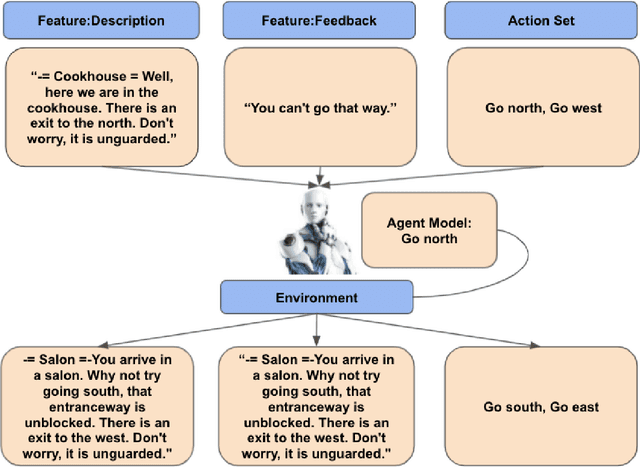
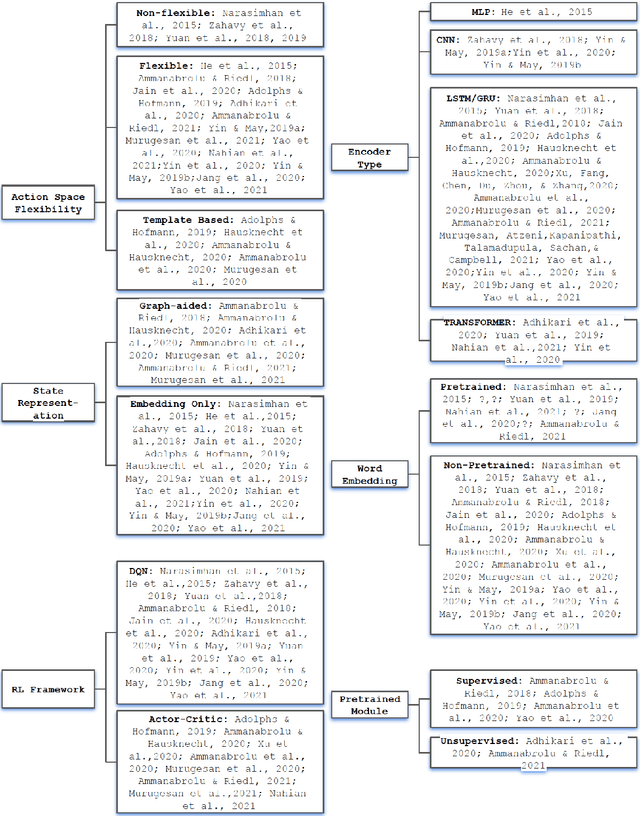
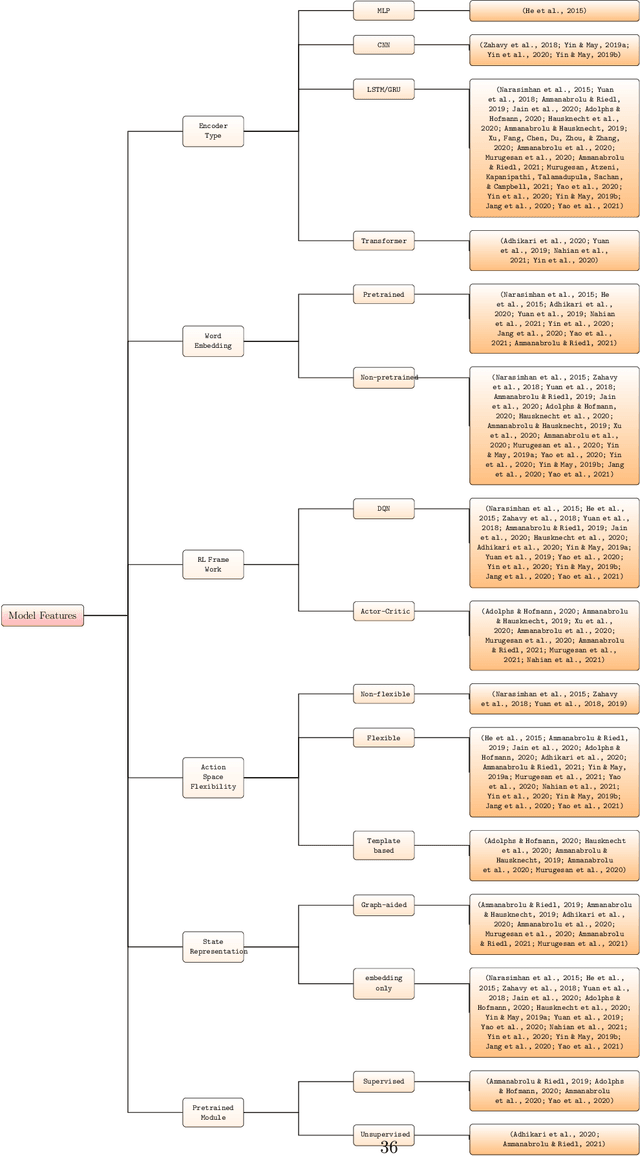
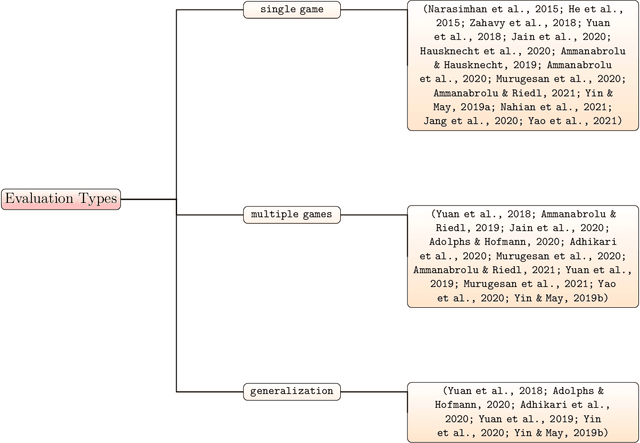
Abstract:Text-based games(TBG) are complex environments which allow users or computer agents to make textual interactions and achieve game goals.In TBG agent design and training process, balancing the efficiency and performance of the agent models is a major challenge. Finding TBG agent deep learning modules' performance in standardized environments, and testing their performance among different evaluation types is also important for TBG agent research. We constructed a standardized TBG agent with no hand-crafted rules, formally categorized TBG evaluation types, and analyzed selected methods in our environment.
SUPER-Rec: SUrrounding Position-Enhanced Representation for Recommendation
Sep 09, 2022
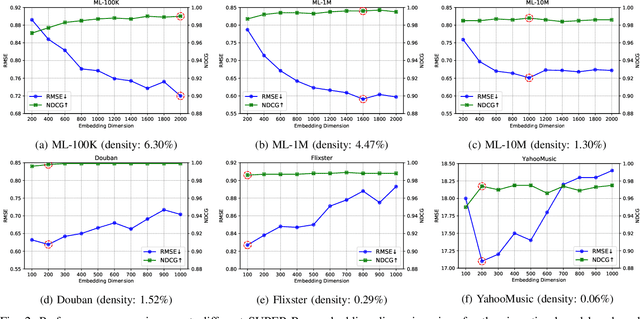
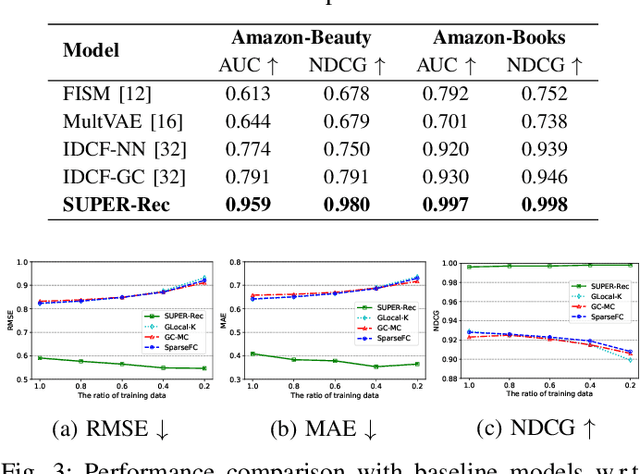
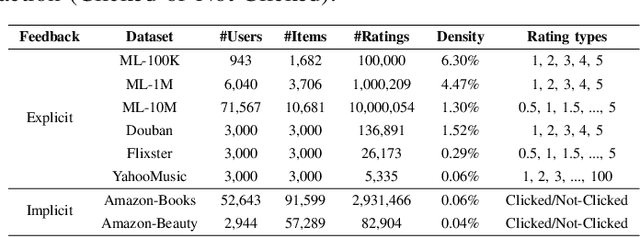
Abstract:Collaborative filtering problems are commonly solved based on matrix completion techniques which recover the missing values of user-item interaction matrices. In a matrix, the rating position specifically represents the user given and the item rated. Previous matrix completion techniques tend to neglect the position of each element (user, item and ratings) in the matrix but mainly focus on semantic similarity between users and items to predict the missing value in a matrix. This paper proposes a novel position-enhanced user/item representation training model for recommendation, SUPER-Rec. We first capture the rating position in the matrix using the relative positional rating encoding and store the position-enhanced rating information and its user-item relationship to the fixed dimension of embedding that is not affected by the matrix size. Then, we apply the trained position-enhanced user and item representations to the simplest traditional machine learning models to highlight the pure novelty of our representation learning model. We contribute the first formal introduction and quantitative analysis of position-enhanced item representation in the recommendation domain and produce a principled discussion about our SUPER-Rec to the outperformed performance of typical collaborative filtering recommendation tasks with both explicit and implicit feedback.
Doc-GCN: Heterogeneous Graph Convolutional Networks for Document Layout Analysis
Aug 22, 2022

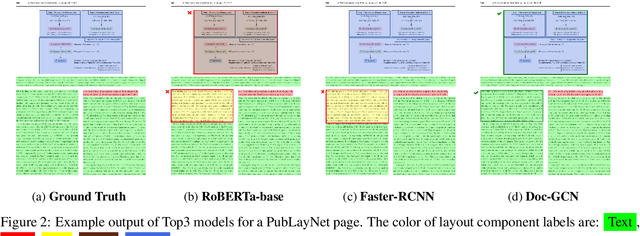
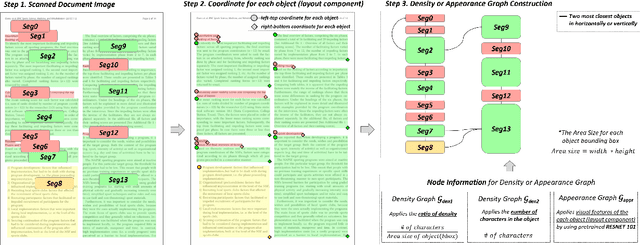
Abstract:Recognizing the layout of unstructured digital documents is crucial when parsing the documents into the structured, machine-readable format for downstream applications. Recent studies in Document Layout Analysis usually rely on computer vision models to understand documents while ignoring other information, such as context information or relation of document components, which are vital to capture. Our Doc-GCN presents an effective way to harmonize and integrate heterogeneous aspects for Document Layout Analysis. We first construct graphs to explicitly describe four main aspects, including syntactic, semantic, density, and appearance/visual information. Then, we apply graph convolutional networks for representing each aspect of information and use pooling to integrate them. Finally, we aggregate each aspect and feed them into 2-layer MLPs for document layout component classification. Our Doc-GCN achieves new state-of-the-art results in three widely used DLA datasets.
 Add to Chrome
Add to Chrome Add to Firefox
Add to Firefox Add to Edge
Add to Edge